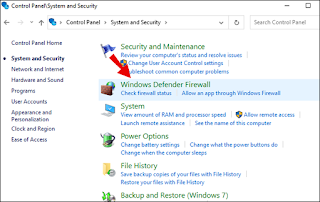Interfacing with a PC distantly is advantageous when it works, and irritating when it doesn't. In the event that your distant work area association is coming up short, you'd need to realize what to attempt to fix it.
In this article, we'll show you that it is so clear to investigate and fix bombed distant work area associations, in view of the most widely recognized foundations for an assortment of Windows working frameworks.
How to Fix Remote Desktop Connection Not Working?
There are plenty of reasons for failing to connect to a remote desktop – expired certificates, blocked firewalls, issues on the client – the list goes on. Here we’ll look at how to fix one common cause of insufficient permissions. Please refer to other sections in this article for more fixes.
To assign permissions to users to access the remote desktop from the remote server, do the following:
1. Enter GPEdit.msc command in the Windows run prompt.
- Access the Server Manager.
- From the left-hand side, select “Local Server.”
- The current state of your system will be detected.
- If the Remote Desktop is “Disabled” click on “Disabled” to open the “System Properties” window.
- Select “Allow remote connections to this Computer” from “System Properties.”
- You’ll receive a warning message, click “OK” to proceed.
- Click on “Select Users.” to give users or groups permission to connect via remote desktop.
- Select “OK”.
- From Server Manager, the remote desktop status may still show as “Disabled”, click the refresh button to update to “Enabled.”
- Ensure your wireless connection is available by checking the status.
- From your wireless router settings, disable the firewall and turn it off for the client and remote computers. Then from Windows server:
- “Network discovery”
- “Remote desktop”
- ‘Remote service management”
- “Routing and remote access”
- “Windows remote management.”
- If you receive “The remote PC can’t be found” error message then ensure you have entered the correct PC name for the remote PC, or you try entering its IP address.
- If you receive “There’s a problem with the network” error message, make sure your network adapter is working and try:
- For home networks: ensure your router is switched on.
- For wired networks: ensure the ethernet cable is plugged into your network adapter properly.
- For devices on wireless networks: ensure your PC’s wireless connection is switched on.
- “WAN Miniport (SSTP)”
- “WAN Miniport (PPTP)”
- “WAN Miniport (PPPOE)”
- “WAN Miniport (L2TP)”
- “WAN Miniport (IKEv2)”
- “WAN Miniport (IP)”
- “WAN Miniport (Network Monitor)”
- “WAN Miniport (IPv6)”.
- Open a command prompt.
- Enter gpresult /H c:\gpresult.html.
- Once the command is complete, open gpresult.html. from “Computer Configuration” > “Administrative Templates” > “Windows Components” > “Remote Desktop Services” > “Remote Desktop Session Host” > “Connections,” find the “Allow users to connect remotely by using Remote Desktop Services policy”. If the setting is:
- “Enabled” – the remote desktop connection is not being blocked by a Group Policy.
- “Disabled” – check “Winning GPO” to see the Group Policy Object that is blocking remote desktop connections.
- Open a command prompt.
- Enter gpresult /S <computer name> /H c:\gpresult-<computer name>.html
- The file produced will use the same information format as the local computer version.
- From search enter Group policy editor and open.
- Select the applicable level of GPO e.g., “local” or “domain.”
- Navigate to “Computer Configuration” > “Administrative Templates” > “Windows Components” > “Remote Desktop Services” > “Remote Desktop Session Host” > “Connections” > “Allow users to connect remotely by using Remote Desktop Services.”


























.gif)
0 Comments